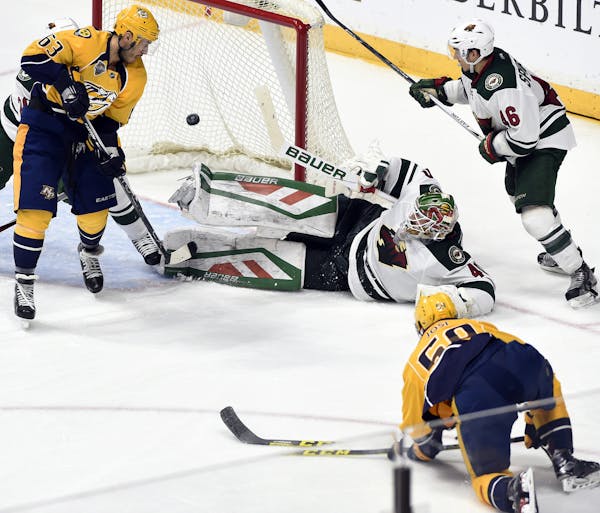Jacques Lemaire was the master of the low-key one-liners, and one of his best all-time quips came early in the 2003-04 season. The Wild was struggling so bad on the power play that Lemaire memorably said, "When we started last year, our power play was really good. It was 23 percent. Now I don't know if we got enough to make milk. It's about 1 percent, half of one percent. It's very skim milk."
Mike Yeo's Wild squad is in a similar power play funk, and it's become so bad that there's this: Minnesota doesn't have a power play goal in the 2016 calendar year, a span of nine games and 20 power play chances. Like Lemaire's team of 12 years ago, Yeo's team lately is zero percent and cannot even make milk on the power play unless it is very skim milk.
Go back even a little further, and the Wild is just 1 for 29 on the power play over its past 15 games. Not surprisingly, Minnesota is scoring fewer than two goals a game overall in that span and has a 5-8-2 record in that stretch.
Power play success and failure tends to be cyclical, but Yeo's teams have been criticized for failures more often than praised for success over the years. Here is a look at a few short-term and long-term power play numbers.
*First off, until this rough 15-game patch, the Wild's power play was actually humming along at a nice clip: 20.8 percent for the season after going 21 for its first 101 in its first 30 games. That's better than the NHL league average of 18.9 percent. So within the context of this season the power play is a very recent problem, even if it is a very stark one.
*Second, there are two problems in the last 15 games. The obvious one is that the Wild isn't scoring on the power play. The second is a little more subtle: the Wild isn't generating a lot of power play opportunities. As noted above, the Wild had 101 power play chances in its first 30 games — an average of 3.4 per game. In the last 15 games, the Wild has had just 29 power plays — an average of 1.9 per game. That speaks not just to a power play drought but to an offensive slump because when you're creating offensive chances, many times you're drawing penalties.
The average NHL team is generating 3.1 power plays per game this season. So through 30 games, the Wild was drawing more than an average number. And in the last 15 games, it's way below average.
*Third, we've seen this before. Minnesota was 7 for 78 on the power play (9 percent) through mid-December last season, which was a contributing factor to the team's slow start. From that point forward, the Wild was 32 for 168 — 19 percent, a little above last year's league average. So it's important to remember: Any time you take a slice of data from a season, it can show an extreme. Larger data sets are usually more useful.
That said, the larger data sets — full seasons under Yeo — still show a power play struggle. In his five seasons as Wild coach, counting this year, Minnesota has ranked (from oldest to most recent) 27th, 16th, 16th, 27th and 24th in power play percentage in the NHL. A couple average years. Three decidedly below average years. No years in the top half of the league.
In the five years before Yeo was hired (three under Lemaire, two under Todd Richards), the Wild ranked (from oldest to most recent) 6th, 7th, 9th, 10th and 13th. Here's a look at their percentages in each of those years (on the chart, the labeled year is the year the season ended, so 2007 is the 2006-07 season and so on):
Is it personnel? Is it the system? I'm not enough of a hockey expert to decipher that. What I do know is that Yeo revamped the power play units in advance of tonight's game in Anaheim. Will that be enough to reverse a 15-game trend — or if you're more cynical, a five-year trend?
We'll all be watching to see.
In heated western Minn. GOP congressional primary, outsiders challenging incumbent

Minnesota Sports Hall of Fame: A class-by-class list of all members

This retired journalist changed professional wrestling from Mankato

